A few months ago, an iceboat followed me home. At 75 lbs, it’s too heavy to carry, so to get it from the roof rack or trailer to the ice, I needed to make a cart. Iceboaters typically make light, sturdy carts with wheels big enough to take the hard pushing and pulling required to get over the high icy ridges that form on the shore. I thought I could also use the cart to roll my sea kayak down a root-rutted trail to my usual launch.I started with shopping for wheels. Inflatable tires don’t perform well when it is very cold, so I bought two 14″ plastic wheels, each rated at 50 lbs, with solid tires and roller bearings that would fit a 1/2″ axle. I had some steel tubing that I could use for an axle. It would go under a wood plank, a 24″ by 3 1/2″ piece of 4/4 ash that I had on hand. The cart could be made wider to take larger boats as long as the weight on the wheels is within their load rating. The first arrangement for carrying kayaks used commercial roof-rack cradles. Disassembled, all of the cart parts fit through the kayak hatch seen here.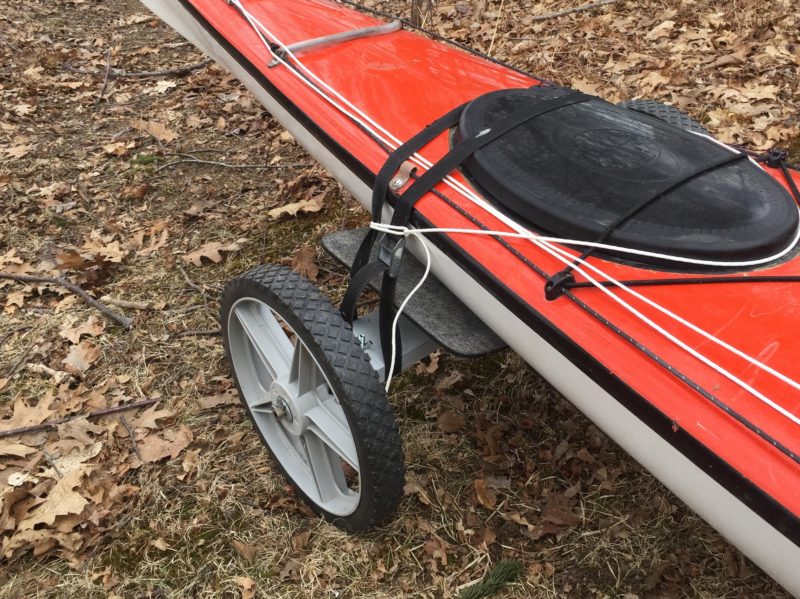 Photographs by the author
Photographs by the author
Join The Conversation
We welcome your comments about this article. To include a photo with your remarks, click Choose File below the Comment box.

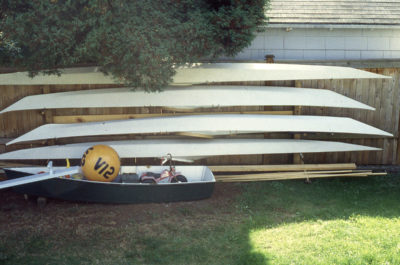

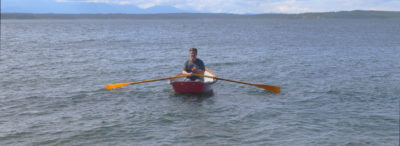
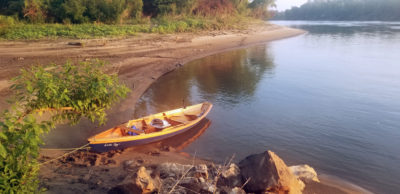
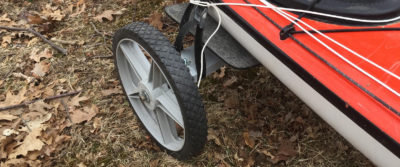
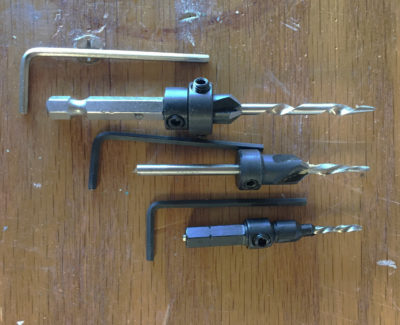

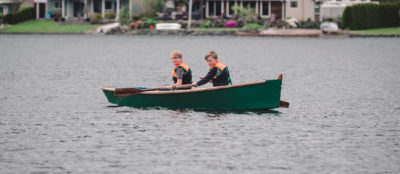
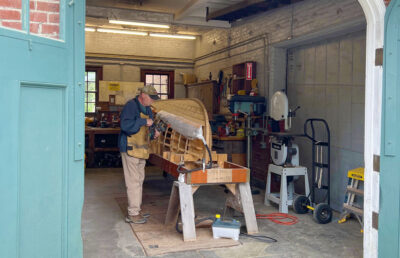
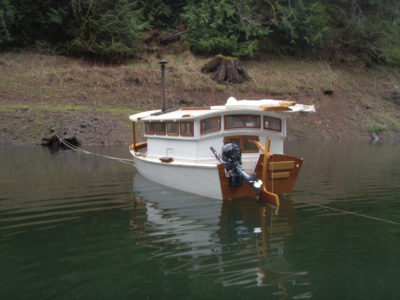
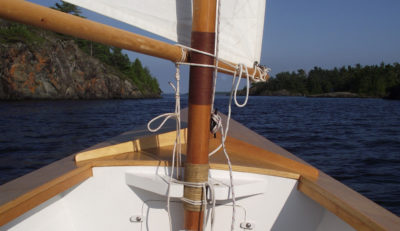
The wheels in your photo seem to look like they will do the job, The wheels that the link is directing toward (at Lowes) are not the same. I bought and used the ones from Lowes a few years ago for exactly this kind of cart. My 100 lb. boat sorta lives on the cart. The wheels failed, first getting flat spots, then totally falling in a turn with side pressure. Unless you treat them more carefully than I, don’t use those.
my .02 worth,
G. Holland
Thanks for the note, Glenn. I kept the packaging label that came with the wheels I bought. The wheels you see on my cart are the Arnold 14″ plastic wheels, model 1475-P. Ben and I both got our wheels at Lowes. The link in the article goes to Lowes’ listing with the right model number, but the wrong photo. It may be an image of an earlier version. The image of the wheel on Home Depot site matches the wheels on our carts. Amazon and even Arnold’s own web site show what appears to be the old version. If you had the older version of the wheels, Glenn, I’d agree that they don’t seem as strong as the newer version Ben and I used.
For better “flotation” in dry sand, 2 wheels on each side would have the drawback of more cost and weight. It might be worth it if you have to traverse much sand.